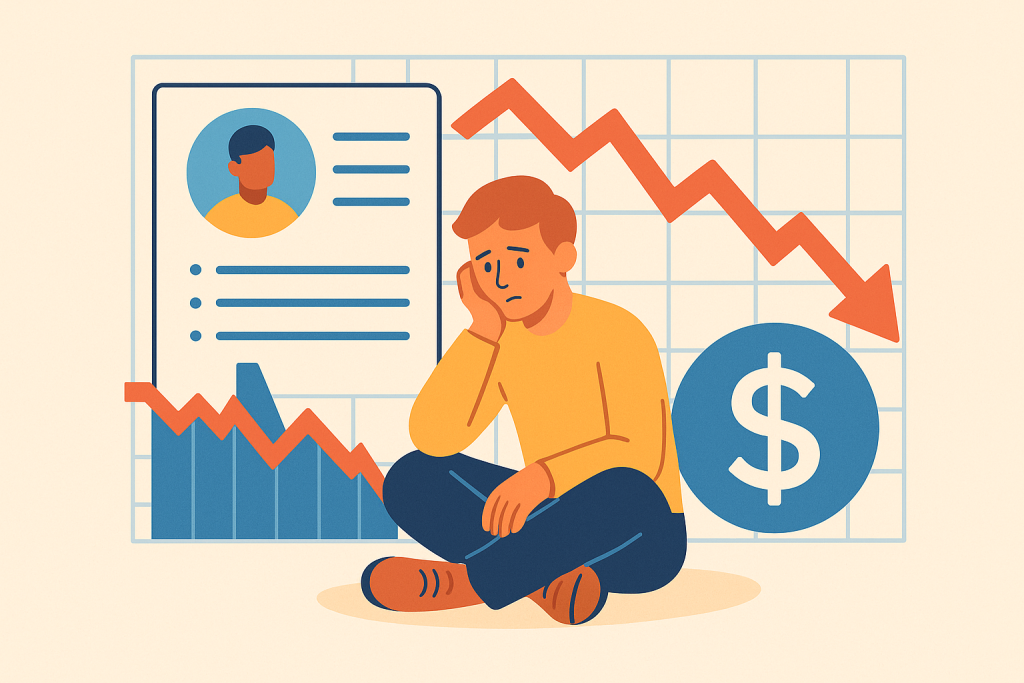Unemployment has long been a crucial economic indicator, directly influencing multiple facets of financial health, including the United States stock markets. The intricate relationship between joblessness rates and market performance often reflects broader economic stability or instability.
When unemployment spikes, it sends ripples through investor confidence, consumer spending, and corporate earnings—all critical components of market dynamics. This article will explore how the ebb and flow of employment impact the movements of U.S. equities, shedding light on both the immediate reactions and the long-term implications for investors and the economy at large.
The unemployment rate’s immediate impact on investor sentiment

The initial reaction to changes in unemployment figures is often reflected in investor sentiment, which can swing markets up or down. When the jobless rate rises unexpectedly, it often leads to apprehension among investors. This anxiety stems from concerns about declining consumer purchasing power, which can affect revenues of publicly traded companies.
Thus, rising unemployment can result in a bearish market atmosphere as investors anticipate weaker corporate earnings reports and possibly reduced dividends. Conversely, when unemployment numbers drop, investor confidence typically sees a boost.
This optimism is founded on the belief that more people working equates to increased disposable income, translating into higher consumer spending. This uptick in consumer activity is good news for company profits, encouraging more investment in equities due to the prospect of potential growth and expanding markets.
Investors are more likely to increase their equity holdings during such periods, often leading to bullish market trends. However, it is important to note that the reaction is not solely binary. Market responses can vary based on other contextual economic indicators such as inflation, interest rates, and global events.
Analyzing historical trends
Delving into historical data, patterns emerge that shed light on how unemployment has influenced market behavior over time. For instance, during the Great Recession, soaring unemployment rates caused a sharp decline in the stock market.
Companies faced decreased demand, leading to lower profits and widespread investor pullback. The fear of extended economic stagnation prompted risk aversion, highlighting the negative correlation between high unemployment and market performance.
In contrast, the recovery period following the recession showcased a different dynamic. As job creation increased, it fostered renewed confidence in market potential. Stocks began to rebound as investors anticipated rising consumer demand.
This recovery period underscores the stock market’s sensitivity to changes in employment data, evidencing a shift towards optimism when seeing improvements in labor markets. Such historical examples illustrate the cyclical nature of the relationship between employment and market dynamics.
Sector-specific impacts of unemployment
Different market sectors are affected by unemployment rates in unique ways, influencing their performance on the stock exchanges. Consumer discretionary sectors, for example, feel significant impacts when joblessness rises. When fewer people have steady employment, spending on non-essential goods tends to drop markedly, negatively affecting companies in this area.
Meanwhile, essential services, such as utilities and healthcare, generally experience less volatility in correlation with unemployment fluctuations. These sectors provide necessary goods and services that remain in demand despite changes in employment rates. Thus, stocks in these sectors might offer greater stability during periods of high joblessness.
Furthermore, financial institutions are closely tied to employment numbers. High unemployment can lead to an increase in loan defaults and a decrease in demand for new loans, adversely impacting banks. Understanding these sector-specific impacts allows investors to better assess which areas are most susceptible to changes in job metrics and adjust their portfolios accordingly.
Long-term economic implications of unemployment on markets
Beyond immediate reactions, prolonged periods of high unemployment can have lasting effects on the stock market. Sustained joblessness can lead to a decrease in overall economic growth, which in turn affects corporate profits and investor returns. With less consumer spending, companies may face prolonged revenue shortfalls, impacting shareholder value and portfolio performance over time.
Additionally, long-term unemployment can result in structural changes in the economy. For example, industries may be forced to innovate or automate in response to reduced workforce availability. While these developments may eventually lead to new growth opportunities, the transition period can be marked by market instability and fluctuation.
Investors need to be mindful of these prolonged effects and consider them when making long-term investment decisions. By analyzing potential scenarios where unemployment rates remain high, stakeholders can better equip themselves to handle possible market downturns. This strategic foresight is crucial in navigating financial landscapes significantly influenced by employment metrics.
Strategies for mitigating risk
To effectively manage the risks posed by changes in unemployment rates, investors can employ several strategies. Diversification remains a fundamental approach, reducing exposure to specific sectors that are particularly vulnerable to jobless figures. By holding a varied portfolio, investors can cushion the impact of adverse market reactions associated with rising unemployment.
Another strategy involves maintaining a balance between defensive and growth stocks. Defensive stocks, being less susceptible to economic downturns, can provide stability, while growth stocks may offer enhanced returns when investor sentiment improves. Regular re-evaluation of portfolio holdings in light of unemployment trends can help maintain an optimal balance.





